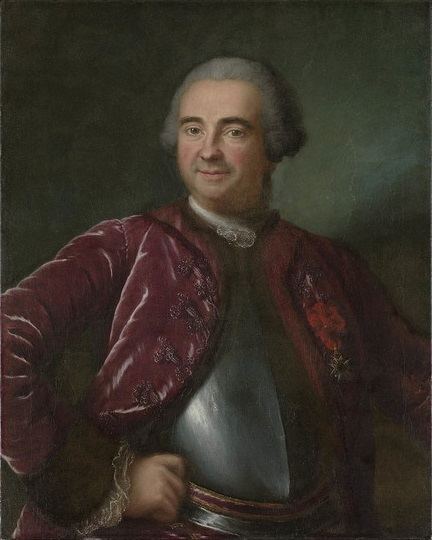Name Gaspard-Joseph de | ||
 | ||
Preceded by Josue Boisberthelot de Beaucours Succeeded by Nicolas Sarrebouce de Pontleroy Born October 3, 1682
Toulon, France ( 1682-10-03 ) Died March 23, 1756(1756-03-23) (aged 73)
Quebec City, New France Spouse(s) Marie-Renee Legardeur de Beauvais | ||
Gaspard-Joseph Chaussegros de Lery (October 3, 1682 – March 23, 1756), was Louis XV's Chief Engineer of New France. He is recognised as the father of the first truly Canadian architecture. In 2006, the Historic Sites and Monuments Board of Canada designated him a person of national historic importance. It highlighted his contribution to the development of New France through the quality, variety, importance and scope of his work in the fields of military engineering, civil and religious architecture, and urban planning.
Contents
Early life
Baptised at Toulon Cathedral in 1682, he was the son of Gaspard d'Estienne de Chaussegros (d.1690), King's engineer and the architect of Toulon in Provence, by his first wife, Anne Vidal de Lery. His family were ennobled in 1325 and long settled in Provence, where their principal residence was the Chateau de Mimet, near Aix-en-Provence. Mimet was given away as a dowry in 1700 on the marriage of his aunt, Lucrece d'Estienne de Chaussegros, to Charles II (1675-1741) de Grimaldi, Marquis de Regusse; President of the Parliament of Aix-en-Provence; grandson of Charles de Grimaldi-Regusse.
From his family papers kept at the National Archives of Canada, Chaussegros de Lery enjoyed the patronage of various high-ranking relatives of King Louis XV. Throughout his life he kept up a friendly personal correspondence with Philippe II, Duke of Orleans, Louis Alexandre, Count of Toulouse, and the Duc de Penthievre, who all expressed their affection for him and his family and assured of him of their support. He was probably trained as a military engineer by his father, afterwards serving in an engineering capacity in the French Royal Army. He fought at the Battle of Turin as aide-de-camp to the Marquis de Vibraye. In 1708, he took part in the abortive attempt to land James, the Old Pretender, at Scotland. He was afterwards a Captain in the Regiment de Sault.
In 1714, he completed a long manuscript, never published, entitled Traite de fortification divise en huit livres. By 1716, he was employed within the Ministre de la Marine and sent to New France to prepare plans of the existing Fortifications at Quebec and to recommend those required to protect the city from attack. This mission led to a permanent appointment as King Louis XV's Chief Engineer there, a post he held from 1719 until his death.
Chief Engineer
Chaussegros' achievements were subject to the will of Jean-Frederic Phelypeaux, Count of Maurepas, at Versailles. The public works for which Chaussegros was responsible included the Fortifications of Quebec and Montreal; Fort Niagara, Fort Chambly, Fort Saint-Frederic and Fort Sault-Saint-Louis; Chateau Vaudreuil at Montreal; The Governor's Pavilion of the Chateau Saint-Louis at Quebec; design of the facade of Notre-Dame Church at Montreal; repairs to the Bishop's Palace at Quebec; designs for a Palais de Justice at Trois-Rivieres; following the Siege of Quebec, the Notre-Dame Basilica-Cathedral at Quebec was rebuilt from plans draughted by him in 1743; studies of a canal from Lachine to Montreal; consultation with respect to the Saint-Maurice Ironworks and the mines in the region of Baie-Saint-Paul; and plans for shipyards and drydocks on the Riviere Saint-Charles at Quebec.
Family
In 1717, at Quebec, he married Marie-Renee, daughter of Captain Rene Le Gardeur de Beauvais (1660-1742), holder of the Grand Cross of the Order of Saint-Louis, and his first wife Marie-Barbe, daughter of Chevalier Pierre de Saint-Ours de L'Echaillon (1640-1724), Captain in the Carignan-Salieres Regiment. Her family were originally from Thury-Harcourt and ennobled in 1510. In 1636, her ancestor Pierre Le Gardeur de Repentigny (1605-1648) established the family in New France, obtaining the seigneuries of Repentigny (named for the seigneury in Normandy of his maternal grandfather, Pierre de Corday de Repentigny) and Becancour in 1647. Gaspard and Marie-Renee were the parents of nine children,
